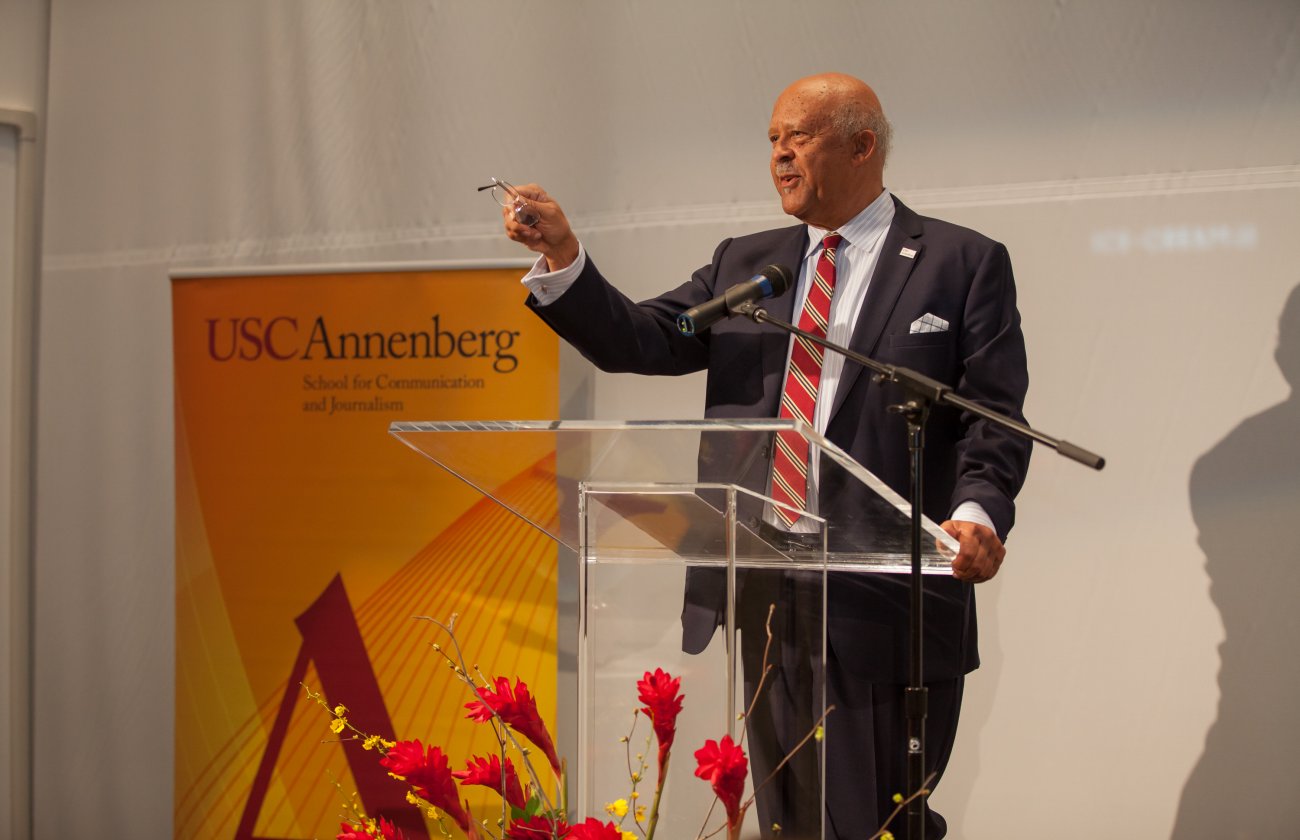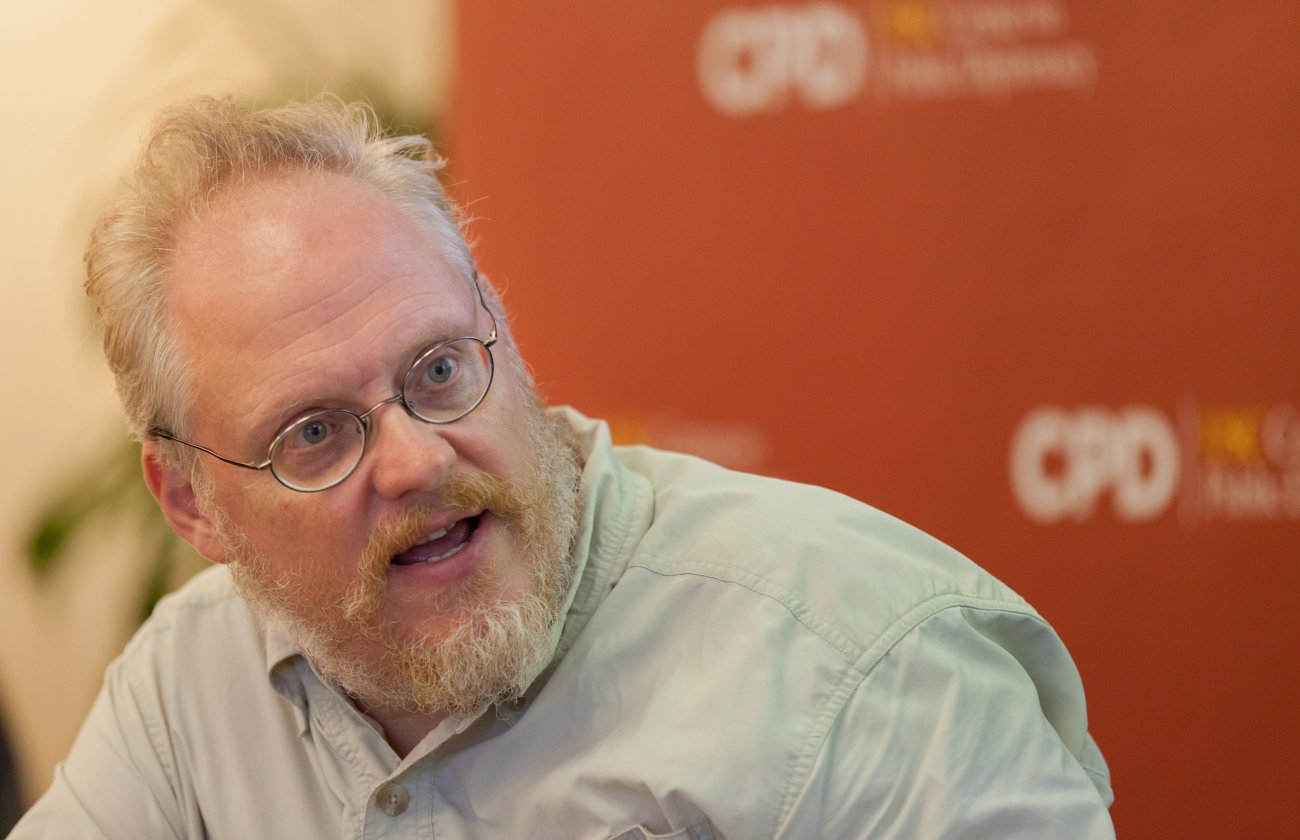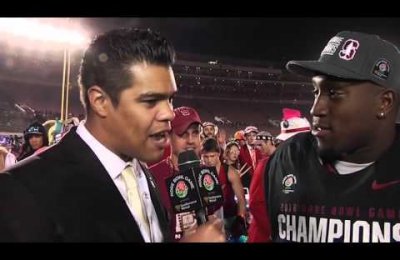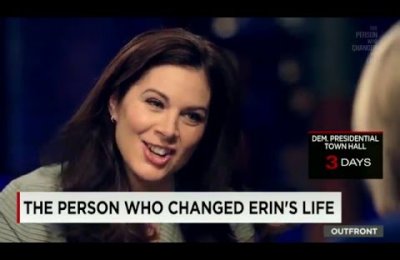By Alex Boekelheide
Ten years ago, before credit default swaps and underwater mortgages became familiar terms and before the economy began a period of contraction to rival the Great Depression, a corporation called Enron went bankrupt.
At the time, the implosion of a Wall Street darling seemed impossible to believe: In less than a month, the seventh-largest company in America imploded, erasing $11 billion in stockholder value and leaving tens of thousands of employees without jobs. The financial scandal also brought down Enron’s auditor, Arthur Andersen, one of the “Big Five” accounting firms, and ushered in new government regulations designed to prevent Enron’s fraudulent accounting practices.
Two perspectives of the Enron scandal were on display Wednesday evening as USC Annenberg hosted a discussion between John Emshwiller, the lead Wall Street Journal reporter covering the Enron story, and USC Annenberg alumna Karen Denne, a key member of Enron’s public relations team.
Led by moderator and journalism professor Gabriel Kahn, the discussion provided a blow-by-blow account of Enron’s downfall. According to Emshwiller, the precipitating event of the story was the abrupt resignation of CEO Jeffrey Skilling, which came the day after Enron released its August 2001 quarterly financial report. The report contained details of Enron’s “LJM partnerships,” or off-balance-sheet entities designed to obscure the company’s exposure to risky investments.
Denne was part of the team that released that financial statement. She relayed the story of how she and her colleagues worked through the night to prepare the release, looking to the executive suite for financial information that was coming much more slowly than usual.
“Finally, I think it was probably around 2 or 3 in the morning, we started talking about what would happen if we just didn’t have the numbers to release,” she said. Eventually the numbers became available, and Denne and her team had just enough time to put the release on the wire before the deadline.
There were problems with the statement, however. “I remember at the time there were sections in the press release that didn’t make sense, that I had questions about,” she said. When she asked the executives to provide more information, she was told that everything was fine and there was nothing to worry about. Ultimately, though, the sections that concerned her were “the very quotes and phrases” that drew the attention of the reporters at the Journal, she said.
Emshwiller talked about his efforts to understand those quotes and phrases, including meeting with senior executives and reviewing the company’s public financial reports. He said that Enron was very good at giving “very precise answers that were completely misleading,” providing factually accurate responses but hiding the full story.
Denne had a different view, saying that the company’s responsibility to multiple stakeholders, including a potential merger partner, made it impossible to be completely forthcoming with reporters. “We never gave an answer that we knew was not accurate. However, we didn’t open the kimono” and reveal the details of their operations, she said.
As the company began to topple, both Emshwiller and Denne said their interactions with the corporation changed dramatically. Denne’s office had a close relationship with top management before the crisis, calling Enron chairman Kenneth Lay a “father figure” for the company. After the August 2001 release, “that access dried up,” she said, and the company assigned a lawyer to ensure each statement put out by her office was based in facts. “We called him the loofah,” she said, after the way he scrubbed their work.
Emshwiller said Enron’s sudden wariness of the media drove his reporting deeper. When a standard request for a conference call with senior executives was met with an unprecedented demand for a list of written questions and an eventual one-paragraph statement saying that nothing had been done wrong, the change in tone got Emshwiller’s attention. “In some ways, that was my first real sense that we might be onto something big,” he said. “By not talking, they suddenly gave me a sense that there must be something seriously wrong here.”
At many points the discussion touched on the current global financial downturn. Denne said Enron’s downfall came as a complete surprise to her, since while today’s news is a steady stream of corporate failures, at the time Enron was an anomaly. “It was absolutely unheard of that the seventh-largest company in America could virtually evaporate,” she said.
Emshwiller contrasted the aftermath of the Enron scandal with the response to the most recent financial crisis, pointing out that while key members of Enron’s executive team went to prison for their crimes, current financial executives haven’t faced the same legal consequences. To him, the difference is due to the intense investigation that followed Enron’s bankruptcy -- by his account, “the largest federal investigation ever of a single corporation.”
“They had a dozen federal prosecutors, and probably 20 to 25 FBI, IRS and SEC investigators, working full time for four years,” he said. “I suspect if you did that with any other corporation, you’d probably find some things.”
“And Jeff Skilling wouldn’t be the only one serving time,” Denne added.
The event was part of M{2e}, USC Annenberg’s Media, Economics & Entrepreneurship initiative, which explores issues of communication and journalism from an economic perspective.
Photos: Alan Mittelstaedt









